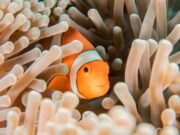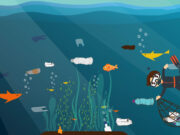Lighting in Murky Depths
As one dives deeper into the underwater world, visibility can become a key challenge. The availability of natural light diminishes and managing artificial lighting becomes critical. The right strobes and reflectors can circumvent these challenges, adding depth and detail to images, and transforming what could be murky snaps into vibrant photographs.
When choosing a strobe, consider the environment in which you’ll be diving. If you’re shooting in clearer waters, high-powered units can provide optimal light. It could be preferable to use lower-powered choices, though, if your dive site if visibility is low or especially poor at specific times of the day (such as early morning or late afternoon).
But what about when your photos are less than perfect? This is where post-production techniques come in.
Employing Post-Production Techniques
Post-production plays a pivotal role in transforming raw underwater images into vibrant, compelling narratives. Key techniques, such as colour grading, light balance, and photo or video editing, revive photographs beyond simple snapshots and elevate them into awe-inspiring tales of the deep.
Color Grading and Light Balance
Subaqueous photography presents unique challenges with lighting and colour representation, which are addressed during post-production. Colour grading enables photographers to restore or enhance the hues, saturation and contrast obscured by underwater lighting. Moreover, well-adjusted light balance ensures an accurate depiction of the blended natural and artificial light sources in underwater photography, giving your images a closer resemblance to real-life underwater scenarios.
Photo or Video Editing
While still images capture a moment, adding motion to those moments can weave an even more intriguing narrative. Here’s when editing videos and photos come in helpful. Detailed editing, whether of still images, animated images such as compressed GIFs, or moving clips, can stitch together a cohesive storyline, adding depth and dimension to your underwater narratives. Mastering the art of editing not only enhances the visual appeal of your captures but also helps convey the emotion and drama of the underwater world engagingly and effectively.

Whether you’re detailing a coral landscape or documenting the behaviour of marine life, post-production is where your images transform into stories. It is an art form of its kind, where you blend technique, creativity, and meticulous attention to detail to reveal the untold mysteries of the deep.


















